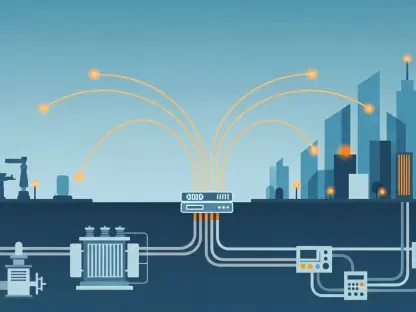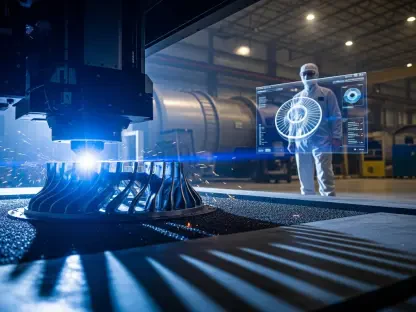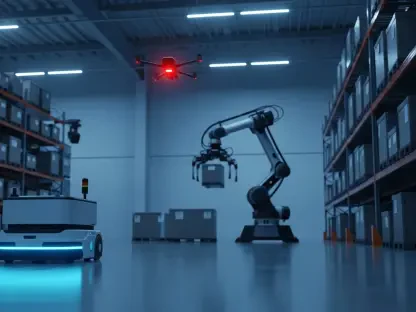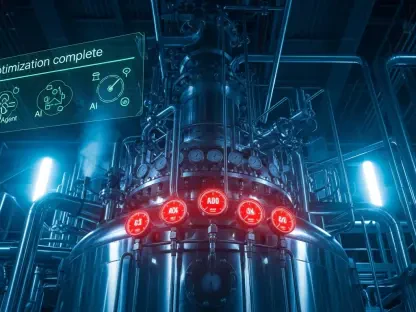In an era where industrial automation is reshaping the landscape of manufacturing and beyond, the inductive proximity sensor market stands out as a vital component driving efficiency and innovation across various sectors. These specialized devices, capable of detecting metallic objects without physical contact through the use of electromagnetic fields, have become indispensable in industries such as automotive, robotics, electronics, and heavy manufacturing. Renowned for their durability and ability to function in challenging environments, inductive proximity sensors are paving the way for safer and more streamlined operations. As global industries increasingly adopt smart manufacturing practices under the banner of Industry 4.0, the demand for these sensors is experiencing a significant surge. This article delves into the factors propelling this market forward, the challenges it faces, regional dynamics shaping its growth, and the technological advancements expected to define its trajectory over the forecast period from 2025 to 2035, highlighting a projected rise from USD 2,304.3 million to USD 3,800 million by the end of this decade.
Forces Behind Market Expansion
The momentum behind the inductive proximity sensor market is largely fueled by the rapid embrace of Industry 4.0 principles across global industries. This transformative approach emphasizes automation and data-driven processes to enhance productivity and precision in manufacturing environments. Inductive sensors are at the heart of this shift, enabling non-contact detection of metallic components in machinery, which minimizes wear and boosts operational safety. Their integration into sophisticated systems like predictive maintenance and automated assembly lines underscores their critical role. With industries striving to reduce downtime and optimize workflows, the reliance on these sensors continues to grow. The market’s projected Compound Annual Growth Rate (CAGR) of 5.2% over the next decade reflects a robust demand for such automation solutions, positioning the sector as a cornerstone of modern industrial strategies focused on efficiency and scalability.
Another significant driver of growth is the escalating need for safety and reliability in industrial settings, where inductive proximity sensors offer a distinct advantage. Their ability to detect objects without physical interaction reduces the risk of equipment damage and enhances workplace safety, a priority for manufacturers worldwide. Beyond safety, the push for cost reduction through automation has led to wider adoption in sectors aiming to streamline operations. The automotive industry, in particular, has emerged as a key area of application, with the rise of electric vehicle production necessitating precise sensing for complex assembly processes. This convergence of safety, cost-efficiency, and sector-specific demands illustrates the multifaceted appeal of inductive sensors, ensuring sustained market expansion as industries evolve to meet contemporary challenges with cutting-edge technological solutions.
Emerging Applications and Innovations
One of the most compelling areas of growth for inductive proximity sensors lies in their expanding applications, particularly within the automotive sector. The shift toward electric vehicles has intensified the need for precise and reliable sensing solutions during manufacturing and assembly stages. These sensors ensure accurate positioning and detection of metallic parts, contributing to the high standards required in modern vehicle production. Additionally, their role extends to other industries such as logistics, where robotics rely on these devices for navigation and object detection, facilitating seamless operations in warehouses and distribution centers. This broadening scope of use highlights how indispensable inductive sensors have become in supporting the intricate demands of automated systems across diverse fields, driving market growth as new applications continue to emerge.
Innovation also plays a pivotal role in shaping the future of this market, with manufacturers focusing on developing more advanced and versatile sensors. Efforts are underway to create compact designs that can be integrated into smaller devices, catering to the trend of miniaturization in industrial equipment. Energy efficiency is another priority, aligning with global sustainability objectives by reducing power consumption in sensor operations. Furthermore, the integration of these sensors with Internet of Things (IoT) platforms is enhancing their functionality, enabling real-time data collection and analysis for smarter decision-making. Such advancements not only address current industrial needs but also anticipate future demands, ensuring that inductive proximity sensors remain at the forefront of technological progress in automation and beyond.
Obstacles and Competitive Pressures
Despite the promising outlook, the inductive proximity sensor market encounters several challenges that could temper its growth. A primary limitation is the restricted sensing range of these devices, which are effective only at close distances and exclusively for metallic objects. This constraint hampers their utility in applications requiring detection over longer ranges or involving non-metallic materials, narrowing their market applicability. Industries seeking broader sensing capabilities often turn to alternative solutions, creating a gap that inductive sensors struggle to fill. Addressing this limitation through technological enhancements remains a critical focus for manufacturers aiming to expand their market reach and cater to a wider array of industrial requirements without compromising on precision or reliability.
Competition from alternative technologies further complicates the market landscape, as optical and capacitive sensors often provide superior performance in specific scenarios. These alternatives can detect a broader range of materials or operate over greater distances, posing a threat to the dominance of inductive sensors in certain niches. Additionally, intense market competition drives pricing pressures, challenging manufacturers to balance cost-effectiveness with quality and innovation. This dynamic forces companies to adopt strategic production methods and explore new ways to differentiate their offerings. Navigating these competitive challenges while maintaining profitability is essential for sustaining growth in a market where technological superiority and affordability are equally valued by end-users.
Regional Dynamics and Global Trends
Geographically, the inductive proximity sensor market exhibits varied growth patterns, with Asia-Pacific emerging as the dominant region due to its rapid industrialization. Countries like China, Japan, South Korea, and India are at the forefront, fueled by expansive manufacturing bases and substantial investments in automation technologies. This region’s leadership is bolstered by a strong focus on scaling up production capabilities and integrating advanced systems into industrial processes. The sheer volume of manufacturing activity, combined with supportive economic policies, positions Asia-Pacific as a powerhouse driving global demand for inductive sensors, reflecting a broader trend of industrial modernization that prioritizes efficiency and technological adoption on a massive scale.
North America and Europe also play significant roles in the market’s expansion, each leveraging unique strengths to contribute to global growth. In North America, the United States leads with robust adoption in the automotive and electronics sectors, where precision and reliability are paramount. Meanwhile, Europe benefits from the proliferation of smart factories and government-backed incentives for industrial innovation, fostering an environment conducive to sensor integration. These regions highlight a unified global movement toward automation, with each area capitalizing on its industrial and technological advantages to support the market’s upward trajectory. This diversity in regional contributions underscores the universal appeal and necessity of inductive proximity sensors in contemporary industrial frameworks.
Vision for Future Developments
Looking ahead, the inductive proximity sensor market is set to maintain its growth momentum through sustained innovation and adaptation to industrial needs. Miniaturization continues to be a key area of focus, allowing sensors to fit into increasingly compact machinery and devices without sacrificing performance. Advances in energy efficiency are also critical, aligning with worldwide efforts to reduce environmental impact through sustainable industrial practices. These developments ensure that sensors not only meet current operational demands but also contribute to broader ecological goals, reinforcing their relevance in a market increasingly shaped by environmental considerations and the push for greener technologies.
Moreover, the integration of inductive proximity sensors with IoT-enabled platforms is poised to revolutionize their application, offering enhanced capabilities for real-time monitoring and data-driven insights. Future innovations may also address existing limitations by extending sensing ranges and improving compatibility with next-generation automation systems. Such progress promises to expand the scope of applications, making these sensors even more integral to industrial processes. As the market evolves, staying attuned to technological trends and industrial requirements will be essential for stakeholders aiming to capitalize on emerging opportunities and navigate the complexities of a dynamic global landscape focused on smarter, more efficient operations.









